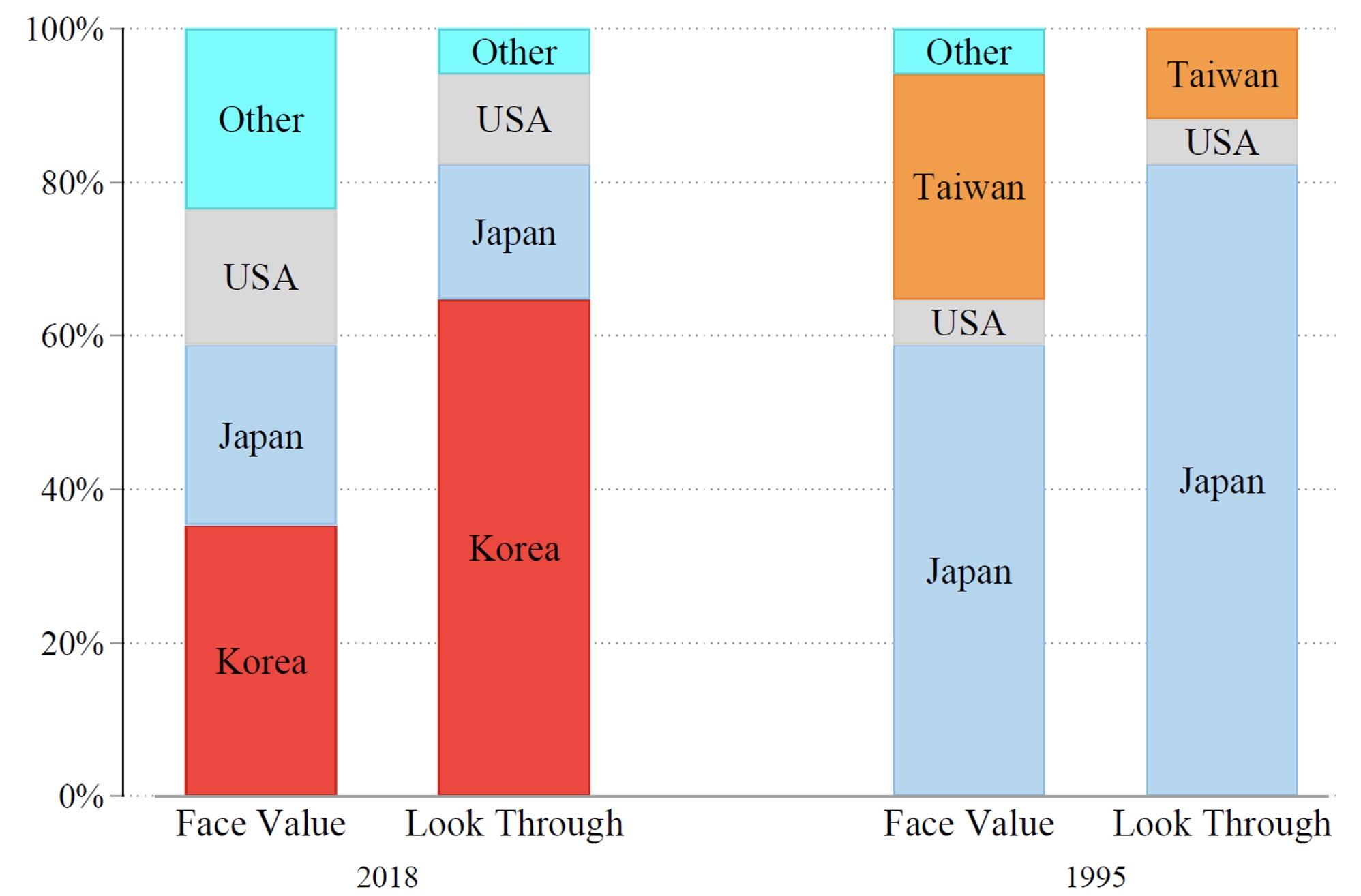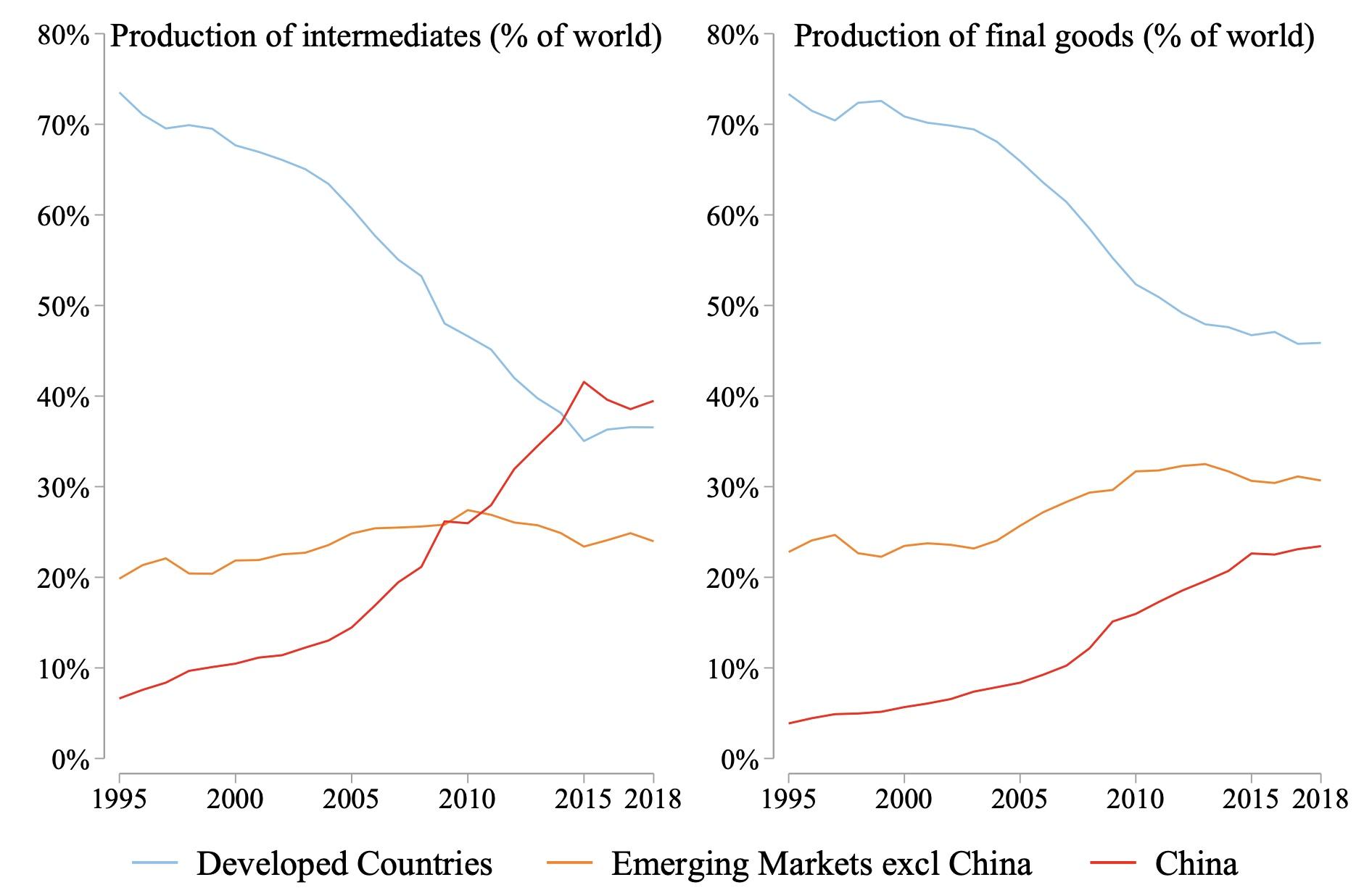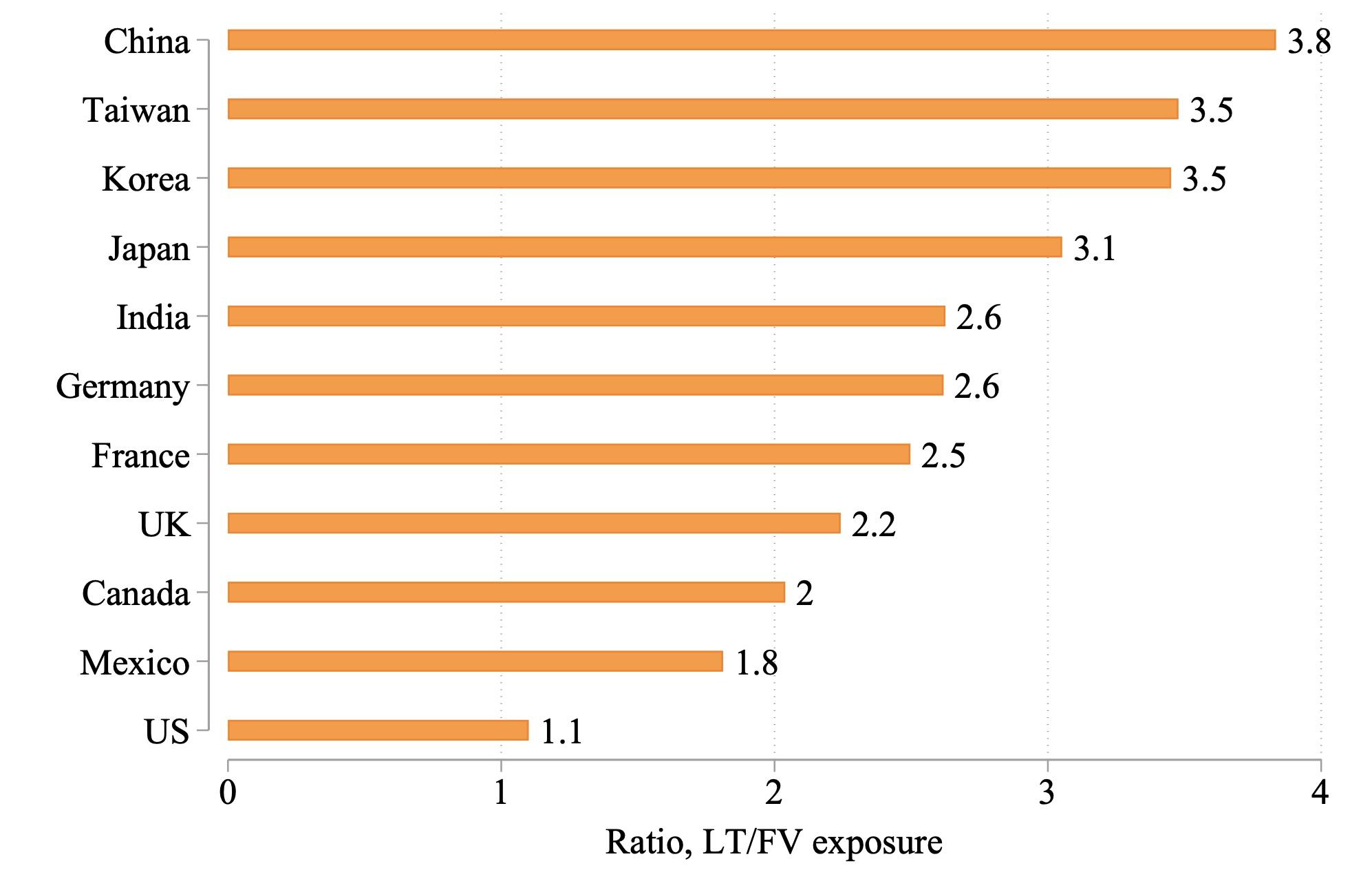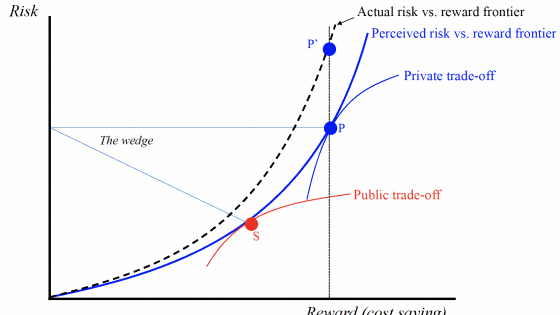Until recently, mainstream policymakers viewed global supply chains (GSCs) as engines of industrial competitiveness in advanced economies and industrialisation in emerging markets (CRS 2020, UNIDO 2015). No longer. When G7 leaders addressed GSCs in their May 2023 statement, they used words like “vulnerabilities”, “coercion”, and “non-market policies and practices designed to reinforce dependencies”. News articles blame supply chain disruptions for problems ranging from laptop and PPE scarcity in the pandemic to soaring headline inflation and weakened national security.
To paraphrase Judy Garland in the Wizard of Oz: “Supply chains are not in Kansas anymore”.
But what changed? In our recent paper (Baldwin et al. 2023), we argue that it was the nature of shocks that changed. Before, they were mostly idiosyncratic, so firms could deal with them. Now, many are systemic and these invite government-level responses. In short, supply chains entered uncharted waters, thrown off course by what Mervyn King and John Kay call "radical uncertainty" (Kay and King 2020).
How should we think about global supply chain disruptions?
Supply chain disruptions raise three categories of issues. The links that form GSCs, the shocks to GSCs that produce disruptions, and policies that can minimise the economic fallout. Our paper touches upon all three, but here we focus on the first two.
When it comes to measuring supply chain linkages, we argue that there is a critical distinction to be made between what we call ‘face value’ and ‘look through’ measures. Face value exposure focuses on the direct source of industrial inputs. If a US carmaker buys a component from, say, Canada, the face value measure chalks up the US exposure as being to Canada.
Look through exposure takes account of the fact that the Canadian component producer may source inputs from other nations; the face value attribution to Canada hides some exposure. For example, if the Canadian supplier was buying some inputs from China, then the look through measure would ascribe some of the exposure to Canada and some to China (see Annex).
Hidden exposure
In Figure 1, we illustrate how much exposure is hidden by using face value versus look through measures. We zoom in on the US given its role as one of the world’s manufacturing giants and a key GSC hub. At the macro level, over 80% of US industrial inputs are sourced domestically. Here, we dig into the top suppliers of foreign inputs to US manufacturing. The figure, which focuses on the nationality of the top industrial input supplier to US manufacturing sectors, shows the share of the sectors where the top supplier is China, Canada, Mexico, Japan, or another nation. A comparison of the two leftmost columns, which display the facts for 2018 (the last year in the database), show that China is dominant using the face value concept, but much more so on a look through basis.
The chart also shows how rapidly China’s role grew as a key supplier for US manufacturing. Comparing the two rightmost columns (for 1995) with the two leftmost, it is clear that China’s importance soared. A closer look reveals that in 1995 Japan played a role similar to China (its look through exposure was much larger than its face exposure).
Figure 1 Top foreign supplier to US manufacturing sectors: Face value versus look through
Source: Figure 2.7 in Baldwin et al. (2023); authors’ elaboration based on 2021 OECD ICIO tables.
Notes: The look through measure used is equivalent to the FPEM (Foreign Production Exposure: Import Side) measure in Baldwin et al. (2022).
For comparison, Figure 2 presents the same calculations for China.
Figure 2 Top foreign supplier to Chinese manufacturing sectors: Face value versus look through
Source: Figure 2.11 in Baldwin et al. (2023); authors’ elaboration based on 2021 OECD ICIO tables.
Notes: see Figure 1.
China’s rapid rise is not just something that affected the US. In fact, China is now the dominant supplier of industrial inputs, as we show in Figure 3.
Figure 3 China dominates world production of industrial intermediates but not final goods, 1995-2018
Source: Figure 2.5 in Baldwin et al. (2023); authors’ elaboration based on 2021 OECD ICIO tables.
Notes: Developed Countries include the EU, EFTA nations, the United Kingdom, the United States, Canada, Japan, Australia and New Zealand. Emerging Markets excl. China includes all other nations (including the rest of world aggregate) except China.
Another angle from which to view the face value versus look through distinction is to take the ratio of the two. Figure 4 presents the numbers for the main suppliers of industrial inputs to the US. The headline here is that the US look through exposure to China for all manufacturing sectors is 3.8 times higher than its face value exposure. The ratio is above three for Taiwan, Korea, and Japan, and it is high for India and Germany. Interestingly, US exposure to itself is greater than 1 since the US exports intermediates to partners who then incorporated them into intermediate goods that are then exported to the US.
Figure 4 Ratio of look through to face value exposure (all US manufacturing sectors), 2018
Source: Authors’ elaboration based on 2021 OECD ICIO tables.
On the nature of shocks
To clarify thinking about supply chain disruptions, we draw upon previous work on GSCs (Baldwin and Freeman 2020, Baldwin et al. 2022) to suggest a simple classification of shocks along two dimensions: the source of the shock – supply, demand, or connectivity – and the nature of the shock – idiosyncratic or systemic (Table 1).
Table 1 Our taxonomy of sources and nature of shocks
Source: Table 3.1 in Baldwin et al. (2023).
Importantly, shocks from one source can spill over into others. For instance, shocks that start as supply-side can eventually affect demand. For example, Helper and Soltas (2021) highlight that shortages of new US cars and trucks caused by the pandemic was a supply shock which also created a demand surge that disrupted the used car market. Additionally, connectivity issues like port congestion or container shortages can arise from both demand imbalances and physical disruptions, such as the Evergreen ship blocking the Suez Canal. This complex interplay is also highlighted by Guerrieri et al. (2022), who point out that COVID-19 began as a supply shock but later led to a demand shock. However, being able to identify the primary source of a shock remains essential. As Baldwin and Freeman (2022) note, the most effective solutions usually depend on pinpointing the root cause. For example, spreading out suppliers across different regions won't help if the issue is a sudden change in demand.
The second dimension distinguishes shocks that only affect specific companies or sectors (‘idiosyncratic’) and those with broader, widespread impacts (‘systemic’). We believe that a key change in GSCs since 2016 has been the rising importance, and frequency of systemic shocks. Moreover, understanding the type of shock can help us determine how to best respond to and prepare for future disruptions.
Global supply chains, shocks, and disruptions: Details matter
Before turning to the shocks, we note that Benjamin Golub made the important point that reduced-form statistics like our look through measure can gloss over important network aspects of supply chains. Figure 5, inspired by Benjamin Golub’s BPEA discussion, presents two supply chain archetypes that Elliot and Golub (2022) call the ‘fan’ and the ‘diamond’. In both, the manufacturer buying the inputs is denoted by the light blue circle at the lowest rung. Tier-1 suppliers are in dark blue and tier-2 suppliers are above them. Various types of shocks are shown with red crosses, which are numbered for convenience: 1 and 2 for tier-1 and tier-2 supply shocks; 3 for connectivity shocks; and 4 for demand shocks.
The key point is that the details affect the disruptive effect of some shocks. For example, a type-1 supply shock implies a stronger disruption in a diamond-type network than it does in a fan-type network. By contrast, a demand or connectivity shock would have similar effects in both types of networks. In short, details matter. The indicators we use in our paper are a good approximation in aggregate but should be complemented by more detailed network analysis.
Figure 5 Details of the network can change the disruptions from a given shock
Source: Authors’ elaboration, inspired by the presentation by Benhamin Golub at the BPEA Panel in September 2023.
Concluding remarks
Our paper discusses the three core aspects of supply chain disruptions: the links that characterise them, the shocks that perturb them, and the policies for mitigating the resulting disruptions. In this column, we have addressed the first two. Our findings suggest that the US has a more extensive exposure to foreign supply chains than commonly believed. But it is perhaps less concerning than commonly believed as well, since we show that roughly 80% of all industrial inputs used by US manufacturers are sourced domestically. There are, however, specific sectors, like autos and electronics, that are quite exposed to foreign suppliers. Exposure to China – especially when considering Chinese inputs in goods sourced from other countries – is particularly understated.
So, what is the upshot? These figures suggest that fully decoupling US and Chinese manufacturing would be economically damaging, given the interdependence. Moreover, merely shifting sourcing to countries like Vietnam would do little to reduce dependency on China if those countries rely on Chinese inputs. This point is also made empirically by Alfaro and Chor (2023) and Freund et al. (2023).
We close with a conjecture. We argue that systemic shocks will continue going forward, as they are likely to continue to rise due to climate change (especially extreme weather affecting production and shipping), geo-economic tensions, and digital disruptions (especially malicious and accidental cyber disturbances).
References
Alfaro, L and D Chor (2023), "A Perspective on the Great Reallocation of Global Supply Chains", VoxEU.org, 28 September.
Freund, C, A Mattoo, A Mulabdic, and M Ruta (2023), “US-China decoupling: Rhetoric and reality", VoxEU.org, August 31.
Baldwin, R and R Freeman (2020), "Trade Conflict in the Age of Covid-19", VoxEU.org, 22 May.
Baldwin, R and R Freeman (2022), "Risks and Global Supply Chains: What We Know and What We Need to Know”, Annual Review of Economics 14: 153-180.
Baldwin, R, R Freeman, and A Theodorakopoulos (2022), "Horses for Courses: Measuring Foreign Supply Chain Exposure”, NBER Working Paper No. 30525.
Baldwin, R, R Freeman, and A Theodorakopoulos (2023), "Hidden Exposure: Measuring US Supply Chain Reliance”, Brookings Papers on Economic Activity, Fall.
Boehm, C E, A Flaaen, and N Pandalai-Nayar (2019), "Input Linkages and the Transmission of Shocks: Firm-Level Evidence from the 2011 Tōhoku Earthquake”, Review of Economics and Statistics 101(1): 60-75.
Bonadio, B, Z Huo, A A Levchenko, and N Pandalai-Nayar (2021), "Global Supply Chains in the Pandemic”, Journal of International Economics 133: 103534.
Carvalho, V M, M Nirei, Y U Saito, and A Tahbaz-Salehi (2021), "Supply Chain Disruptions: Evidence from the Great East Japan Earthquake”, The Quarterly Journal of Economics 136 (2): 1255-1321.
CRS – Congressional Research Service (2020), “Global Value Chains: Overview and Issues for Congress”, 16 December 16.
Elliott, M and B Golub (2022), “Networks and economic fragility”, Annual Review of Economics 14: 665-696.
Goldberg, P K and T Reed (2023), “Is the Global Economy Deglobalizing? And if so, Why? And What is Next?”, Brookings Papers on Economic Activity, Spring.
Guerrieri, V, G Lorenzoni, L Straub, and I Werning (2022), “Macroeconomic Implications of COVID-19: Can Negative Supply Shocks Cause Demand Shortages?”, American Economic Review 112(5): 1437-1474.
Helper, S and E Soltas (2021), “Why the Pandemic Has Disrupted Supply Chains”, Council of Economic Advisors, White House, 17 June.
Imbs, J M and L Pauwels ( 2022), "Measuring Openness”, CEPR Discussion Paper No. 17230.
King, M and J Kay (2020), Radical Uncertainty: Decision-making for an Unknowable Future, Hachette UK.
Schwellnus, C, A Haramboure, and L Samek (2023a), "Policies to Strengthen the Resilience of Global Value Chains: Empirical Evidence from the COVID-19 Shock”, OECD Science, Technology and Industry Policy Paper No. 141.
UNIDO – United Nations Industrial Development Organization (2015). “Global Value Chains and Development: UNIDO’s Support towards Inclusive and Sustainable Industrial Development”.
Annex: Details of our measures
This annex draws heavily upon Box I.B. in Baldwin et al. (2023). To be more precise about the distinction between face value and look through measures of exposure, we dig into some matrix algebra. In matrix form, the gross output of sectors (all sectors in all nations) are listed in a vector called X. Each sector’s gross output is either used for final demand, which we capture with the vector F, or used as intermediate inputs, which we refer to as the matrix T, that is X = Tι + F, where ι is a vector of 1s for aggregation of inputs into vector form. This is an accounting identity as it is merely categorizing the output of sectors into final or intermediate usage.
The intermediate sales to any sector, in turn, are related to the gross production of all sectors, and the technical input-requirement matrix, defined as each element of T divided by the corresponding country-sector-specific gross output is denoted as A. The elements of the A matrix tell us how much intermediate inputs a single unit in a nation, say the US auto sector, needs from any other sector, say the rubber sector in Brazil. In symbols, Tι = AX. Putting together the pieces, X = Tι + F can be written as X = AX + F. Inverting, X = (I - A)-1F where I is the identity matrix. Here, (I - A)-1 is the famous Leontief matrix, more formally known as the Leontief inverse matrix, which we call L.
As will be familiar to readers versed in matrix algebra, (I - A)-1 equals the sum of an infinite series. The series is: I + A + A(A) + A(AA) + ... . In words, the I reflects the production location of a given good. The term A captures the location of production of the inputs to the final good. The indirect connections, i.e. the inputs to the inputs, are captured by A(A), A(AA), and so on. In our terminology, face value exposure is I + A and look through exposure is (I - A)-1.












